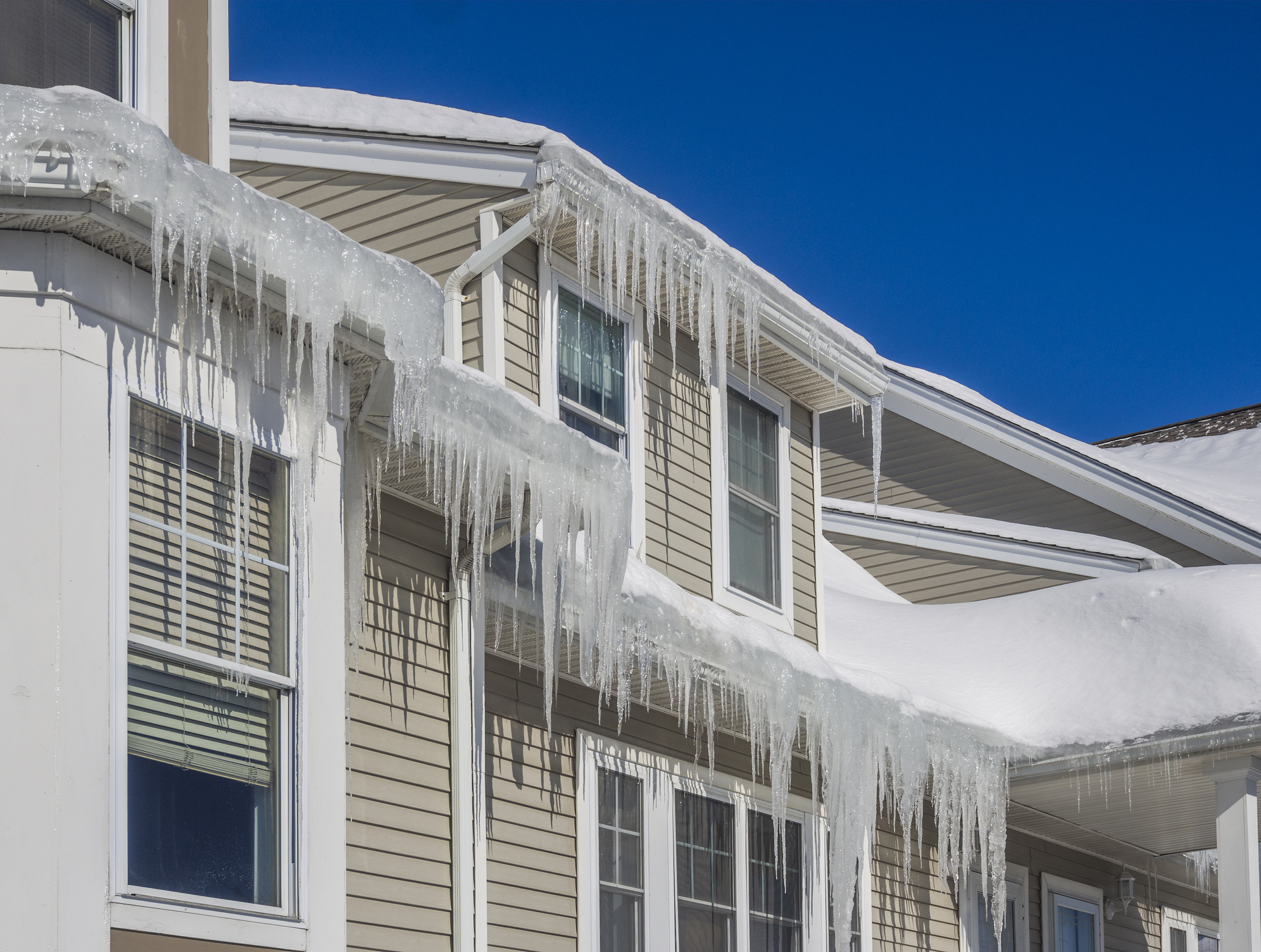In Minnesota, we often run into issues with ice dams on homes. Ice dams form when snow and ice on the roof melt and then refreeze at the edges and on the gutters, causing large dams of ice to build up along the edge of the roof. This, in turn, prevents melting snow from properly draining off the roof and can result in damage inside a home as that melting snow finds another route. The primary causes of ice dams are an excess buildup of snow and ice on a roof and heat loss from the roof that causes this snow and ice to melt enough to run down to the edge of the roof, where it gathers as it refreezes. Heat loss from a roof is generally the result of improper insulation and/or ventilation in the attic that allows the warm air inside the unit to transfer to the attic.
Now that we know how an ice dam forms, the next step is to determine who is responsible for maintaining the portions of the property that contribute to the formation of ice dams. This will vary depending on the type of community association and how the maintenance obligations are defined in the association’s governing documents. In a condominium, including townhome-style condominiums, the upper unit boundary is typically going to be the unfinished surface of the ceiling, such that the paint on the ceiling is part of the unit but the sheetrock and everything above it is part of the common elements. In almost all cases, the association is going to be responsible for maintaining the common elements, so in a condominium, the association is responsible for the roof as well as the entire attic and everything down to the sheetrock forming the ceiling of the unit.[1] The unit owner has no control over the association’s maintenance of these common elements (other than an obligation to report any issues or need for maintenance), including whether there is proper ventilation or insulation in the attic. Because the association maintains the attic and the roof, it will generally be responsible for any damages that result from its failure to properly maintain these components. This includes any damages to the inside of the owner’s unit.[2]
In a cooperative, the association owns the entire property and leases units out to the members. Members may be responsible for maintaining certain items inside their unit per the association’s governing documents but will generally not be responsible for maintaining the attic or roof. As such, cooperatives are similar to condominiums in that the association is generally going to be responsible for any damages caused to a unit as the result of ice dams forming on the roof.
In a townhome community, the unit owner owns their entire dwelling as well as the land underneath and the sky above and may also own a small plot of land surrounding the dwelling. Thus, in this type of community, the attic and roof are part of the owner’s unit and are not deemed common elements. However, just because they are not common elements does not mean that the association is not responsible for maintaining any of these components. Under the association’s governing documents, the association will usually be responsible for maintaining portions of the owner’s unit, including items on the exterior of the dwelling. So the association would typically be responsible for maintaining roofs, siding and other exterior building surfaces as well as certain other enumerated exterior components. However, in most cases, the unit owner is going to be responsible for maintaining all portions of the interior of the dwelling, including the attic. So unlike the situation in a condominium or cooperative where the association is going to be liable for failing to maintain proper insulation and/or ventilation in the attic, in a townhome this responsibility will typically fall on the unit owner. If the owner fails to properly maintain the attic and heat loss results in ice dams forming which, in turn, cause damage to the interior of the unit, the association will generally NOT be responsible for those damages unless they are covered under the association’s master insurance policy. Further, to the extent that the owner’s failure to properly maintain his or her unit results in damage to the roof or other portion of the property that the association is responsible for maintaining, the association may be able to assess that owner for the cost of repairs under Minnesota Statutes 515B.3-107(a).
Many associations have adopted policies or resolutions regarding how they will handle issues relating to ice dams, since most governing documents do not directly address this. The policy may include things such as when or whether the association will arrange to have snow or ice removed from the roof as well as who will pay for the cost to remove ice dams if they develop and/or for repairs to units in the event that damage occurs as the result of ice dams. Because the association normally maintains the roof, the association would be the one arranging for any ice dam removal or other roof maintenance or repairs related to snow and ice and would not permit owners to do any work that could damage the roof or void its warranty. However, the owners may handle repairs to the interior of their units and may be charged for the cost of work performed by the association if provided for under the governing documents and/or the Minnesota Common Interest Ownership Act (“MCIOA”).
If you have questions regarding ice dams, would like assistance in preparing an ice dam policy for your association, or for any other questions or issues relating to community associations, feel free to contact Phaedra Howard at [email protected] or 952-746-2142.
[1] You will need to check your specific governing documents in case the unit boundaries are defined differently.
[2] See Minn.Stat. 515B.3-107(a), which provides that “damage to the common elements or any unit as a result of the acts or omissions of a unit owner or the association, including damage resulting from the unit owner’s or the association’s lack of maintenance or failure to perform necessary repairs or replacement, is the responsibility of the unit owner or association responsible for causing the damage…” (emphasis added).


